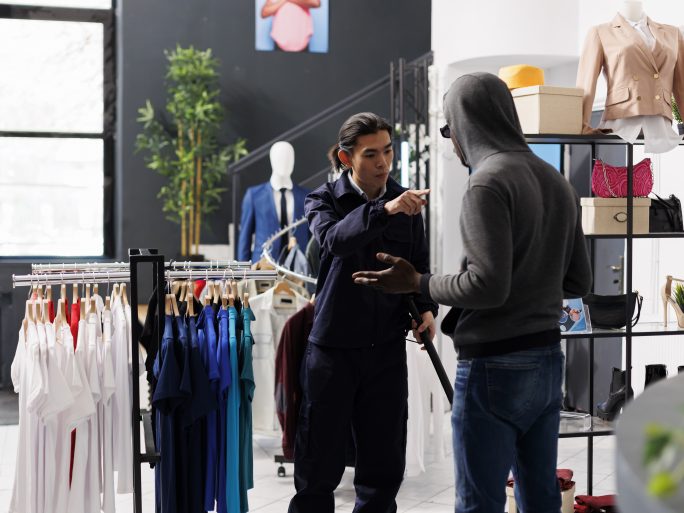Anti-theft Device with AI

The majority of inventory discrepancies in the German retail sector are caused by shoplifting.
Now that the retail sector has recovered from the effects of the pandemic, the number of shoplifting incidents is on the rise again. According to a study by the EHI Retail Institute, losses due to theft increased by 15% in 2022 compared to the previous year. This brings them back to pre-pandemic levels. According to the study, retailers lost around 3.73 billion euros in 2022.
Theft protection for goods is common
The question of how stores can most effectively prevent the disappearance of goods has long preoccupied retailers. Common measures include theft protection for goods, surveillance cameras and the deployment of trained security staff. Above all, however, it is also the responsibility of sales staff to be vigilant and intervene in the event of conspicuous behavior. However, retail employees are often unable to do this without neglecting other areas of responsibility.
After all, their main task is to advise customers when they have questions or concerns, fill shelves, process orders and deliveries, and cash up. In normal everyday life, there is little time to keep an eye on potential shoplifters. What’s more, store surveillance requires special employee training.
AI relieves employees
The use of artificial intelligence can help here. By integrating AI features into in-store surveillance cameras and connecting them directly to the employees’ communication solution, the wireless x-hoppers headphones from Wildix offer a way to prevent up to 60 percent of shoplifting in retail.
With the help of AI, the cameras recognize customers’ movement patterns. As soon as they detect suspicious behavior, the system informs employees via their headsets. This notification also includes the location of the incident so that employees can decide whether to intervene directly or, for example, issue a verbal warning over the store’s public address system. The procedure can be flexibly adapted to the circumstances of each incident.
AI can be trained further
The system also learns. If a certain movement is mistakenly classified as suspicious, for example if a customer removes an item from their bag instead of putting it away, the AI can be trained accordingly and no longer triggers an alert the next time.
The solution is more efficient than previous approaches and has several benefits: employees do not have to proactively keep an eye on several cameras, but can concentrate on other tasks until an alert is triggered. Furthermore, dedicated security personnel are no longer required. The AI also takes over the analysis of the camera data. This not only saves retailers time, but also human resources, as fewer employees are required and they do not need to be specially trained. This is a welcome advantage, especially in times of a shortage of skilled workers.
Data protection naturally plays a central role in video surveillance. If other cameras are already in use on the sales floor before the new AI is integrated, no additional steps are necessary. If the cameras are newly installed, a clearly visible notice must be placed stating that the store area is under camera surveillance. The solution is therefore GDPR-compliant.